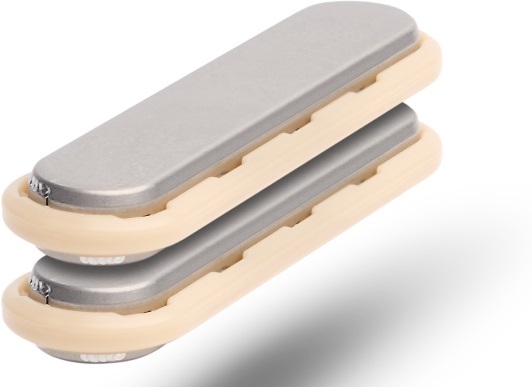Novel Magnet Compression Anastomosis Technology Ensures Fewer Complications, Bleeds or Leaks
Posted on 09 Sep 2024
Traditional anastomotic devices like staples or sutures can be challenging to apply in tight spaces during minimally invasive surgeries and may harm bowel tissue by cutting or piercing it, leaving foreign material behind. Now, an incisionless, sutureless, staple-free technique based on a proprietary magnetic compression anastomosis technology is set to revolutionize how surgeons achieve anastomosis.
GT Metabolic Solutions (St. Michael, MN, USA) is at the forefront of pioneering this magnetic compression anastomosis technology for advanced minimally invasive procedures. This technology is designed to eliminate the need for bowel incisions, minimize technical variability by the user during procedures, and allow natural excretion from the body. The technique employs magnets to achieve anastomosis without leaving foreign materials behind, thus promoting the natural tissue healing process. To date, seven peer-reviewed studies have been conducted, including a recent multi-center clinical trial with 43 patients that reported no anastomotic leaks, bleeds, or obstructions in duodeno-ileal side-to-side anastomosis during bariatric and metabolic surgeries.

Going forward, the researchers plan to conduct studies to broaden the improvements in patient outcomes and extend the reach of this minimally invasive anastomotic technique to more patients. The company’s MagDI System for side-to-side duodeno-ileal anastomosis has now received De Novo marketing authorization from the U.S. Food and Drug Administration (FDA). In addition, the company has developed a magnetic compression solution known as delayed anastomosis technology (DAT) in collaboration with leading global experts. This technology provides surgeons with a consistent method to create anastomoses while aiming to reduce complications like leaks and bleeds in complex procedures. This solution simplifies the surgical approach to anastomosis, enables use in procedure staging, and is completely reversible.
"Creating a secure anastomosis free of complications bleeds or leaks is the goal of any minimally invasive surgical approach," said Michel Gagner, MD, and Co-Founder of GT Metabolic. "Magnetic compression anastomosis is designed to allow for more consistent tissue alignment, central necrosis, and circumferential healing while leaving no foreign materials behind to impede the natural tissue healing process."
"Obtaining Medical Device De Novo Classification to market our platform in just four years following the company's inception is incredible," added Thierry Thaure, CEO, and Co-Founder, GT Metabolic. "The MagDI System offers the concept, for the first time, to democratize the surgical approach to anastomosis, enabling surgeons to potentially achieve a more consistent outcome in a less invasive and potentially less expensive solution. We are looking forward to worldwide launch of our incisionless anastomosis system later this year."
Related Links:
GT Metabolic Solutions














